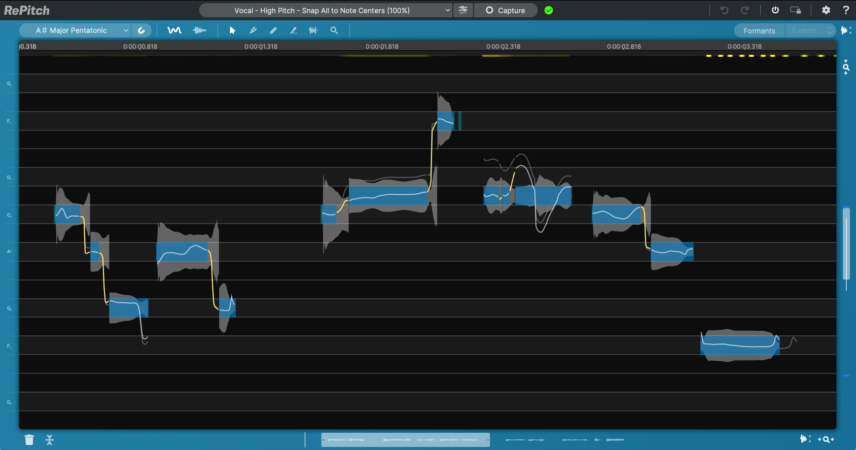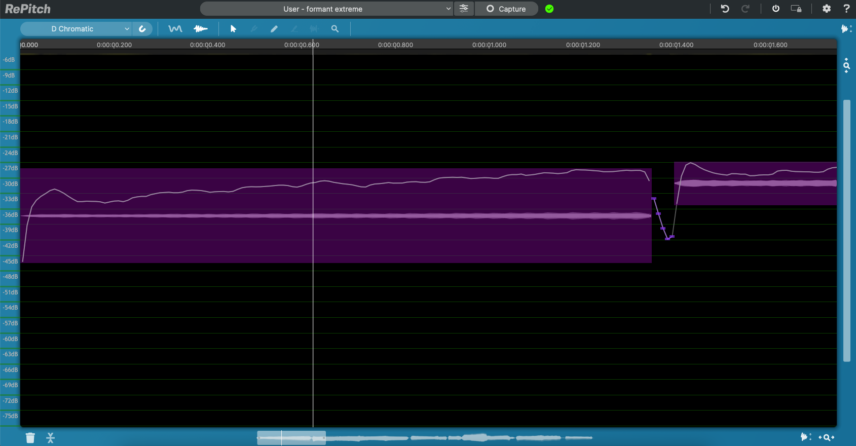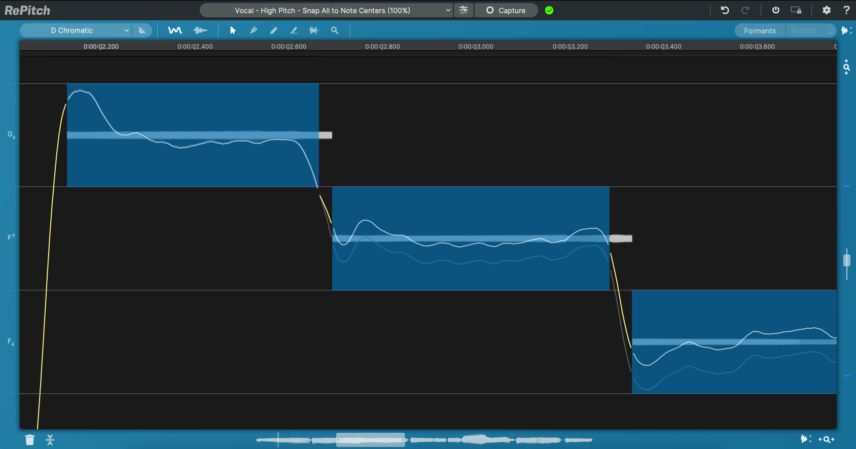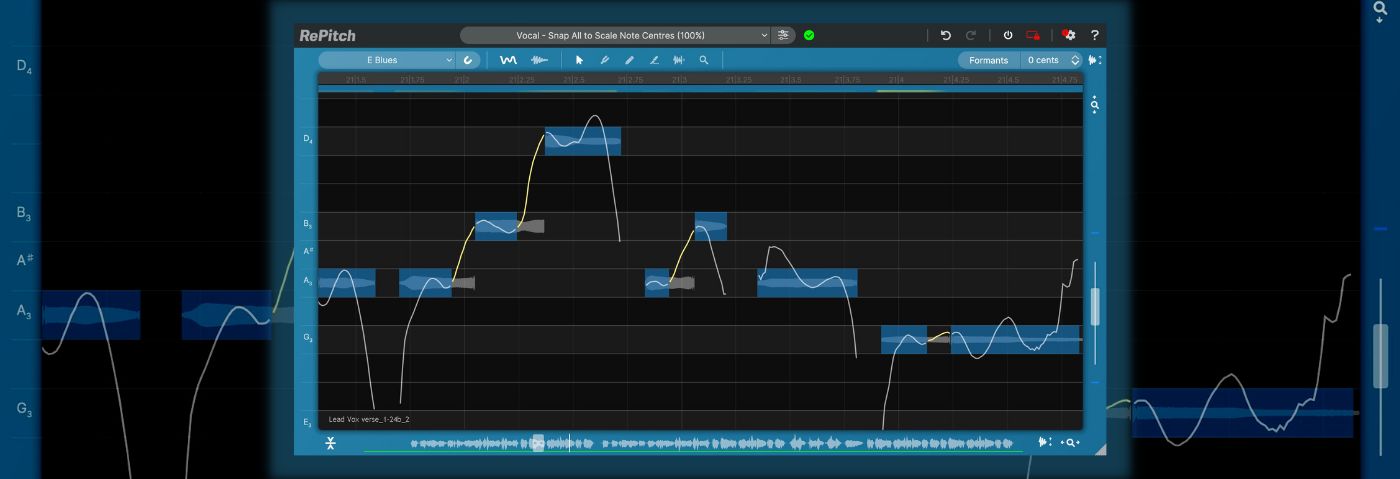Vocal processing specialists Synchro Arts have released RePitch, a pitch correction plugin. Is it right for your workflow?
Like it or not, vocal pitch correction is here to stay. No matter the genre, tuning vocals has become part and parcel of modern music production.
While there are plenty of plugins to help you get an extreme effect, ones that can do it transparently with a quick and easy workflow are a little more sparse on the ground. Synchro Arts, the company behind the world standard VocAlign Project 5, have now thrown its hat into the dedicated pitch correction ring with RePitch.
Is it good enough to challenge Autotune and Melodyne? “Tune in” and let’s find out!
What Is RePitch By Synchro Arts?
RePitch uses technology from the company’s flagship Revoice Pro plugin, which combines alignment and pitch correction. RePitch concentrates on the pitching aspect (as if you couldn’t tell from the name) and—crucially—makes it extremely easy to use.

Where RePitch excels is in natural-sounding pitch correction. There’s some real magic happening here. Even when pushing it to the limit and using it creatively, things generally sound musical. This is because Synchro Arts base their pitch analysis on the “fundamental principles of human pitch perception,” as they say. It makes sense. We’ve evolved over hundreds of thousands of years to stay finely attuned to the human voice. We immediately notice when something’s not right. RePitch manages to sound “right.”
An Overview Of RePitch
If you’ve used any manual pitch correction software before, RePitch should look instantly familiar.
Within the Main Window, the plugin displays captured audio waveform information, with notes represented vertically and time horizontally. You can see the placement of the original waveform as a gray shadow, with the corrected version highlighted by a blue box in front of it. Within the box there’s pitch information represented by a white trace line.
You can edit any of the information here, either by moving the entire box up and down, with note and semitone information helpfully displayed or by adjusting the pitch movement within the box itself. You can do this by dragging within the box to make overall adjustments, or with the editing tools to make fine ones.

So far so good but Repitch also allows you to adjust the timing of notes. With this, you can radically alter not only the pitch and melody but also the cadence and rhythm of the vocal performance, and the great news is it’s just as magically natural-sounding as the pitch adjustment. You can either shorten the note from the front or back of it or use the warp point markers to flex the audio like you would in a DAW.
You can also adjust the volume of the audio, with a handy level display screen.
Capturing Audio
To get the audio to a state where you can alter the pitch and timing, you first need to capture the audio.
This can be done one of two ways: in real-time or instantaneously. There are advantages to both (essentially control versus speed) but whether your DAW can do them both depends on whether it supports ARA plugins. Not all plugins do; Ableton Live does not, for example, and so can only handle real-time capture. The capture method is also DAW specific but essentially you drop an instance of RePitch onto the audio track and hit the capture button. In Live, you can then stop and start the DAW at any point that you like. ARA versions will capture all of the audio on the track automatically.

When capturing, you can tell RePitch to not make any changes and leave everything to you, or you can start with one of the Macros, such as Snap All to Scale Note Centres. You’re free to adjust the Macros as well, setting how much pitch correction it automatically applies, the type of audio (high-pitched, low-pitched, etc.), and whether to snap it to scale and formant information. You can then save changes as presets for use in the future. Note that you can recapture audio at any time using the Macros as well.
For those who already have VocAlign, the two plugins work together, allowing you to not only adjust the alignment and timing of vocals across multiple audio tracks but also adjust timing in the same way.
RePitch In Use
We wanted to see how RePitch worked in practice. All of the vocal tracks used in these examples come courtesy of singer Reese Massey and her jazz vocal group, Point Of Departure. You can hear the original tracks from their album, In Time, here.
Test 1: Basic Processing
First, we processed this vocal snippet. Although Reese is a great singer, the original needed some tightening up, particularly for pop and dance-oriented applications. First, we captured it with no pitch correction so we can see what we’re working with.
Next, we used the Macro preset to snap it to scale note centers. We then went through and tightened up the individual notes.
Here is the unprocessed audio:
After RePitch:
Test 2: More Extreme
Next, we wanted to hear how it sounded with more extreme settings. We started with a different clip, snapped it to note centers, and then got heavy-handed with the in-block pitch and vibrato, smoothing it out considerably.
Here is the original audio:
And smoothed out:
Finally, we used the macros to reprocess the audio, this time lowering the formants all the way to give the vocal a male quality.
Formant processing:
Test 3: Remixing the Melody
So far, we’d just used RePitch to clean up the pitch but next, we wanted to use it as a remix tool. This time, we not only snapped it to note center, but also moved the notes around to create a new melody. We then adjusted the timing.
The original audio (note that the singer sang flat on purpose in the original song):
And with a new melody and adjusted timing:
Test 4: Saxophone Processing
RePitch isn’t just for vocals. It can process any monophonic (non-chord) signal. For our last test, we employed it to bring a Splice sax sample in the key of F minor for use in a UK garage track.
The original sax:
And processed with RePitch:
Easy and Fast
RePitch is extremely easy to use. The display and controls are intuitive, even if you’re not already familiar with pitch correction software. The Macros make quick work of pitch correction, and there are plenty of editing tools to get surgical if you need them. We particularly liked being able to cut up notes into multiple pieces, make adjustments, and then reconnect them. If all you need to do is correction, it’s got you covered, but if you decide to get a little more creative, you can do that as well—and quickly and easily.
The Final Word
The obvious competitors for RePitch are Celemony’s Melodyne and Autotune by Antares Tech. They both offer a variety of payment levels, with Autotune also coming in a subscription form.
Although these can alter pitch, they all do something a little different. If you mostly work with monophonic vocals and instruments, RePitch is a solid option at an affordable price (£178). Given their compatibility, those who already work regularly with VocAlign will find this purchase to be a no-brainer.
RePitch is fast, intuitive and easy to use. It’s also deep—there’s more even than we’ve had time to mention here—but most importantly, it just sounds great.
RePitch is normally priced at £139 but is currently on sale for Black Friday. Find out more on the Synchro Arts website.
The Verdict
Price: Black Friday price £70
Purchase: RePitch
The Final Word
RePitch is fast, intuitive and easy to use. It’s also deep—there’s more even than we’ve had time to mention here—but most importantly, it just sounds great.
